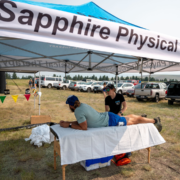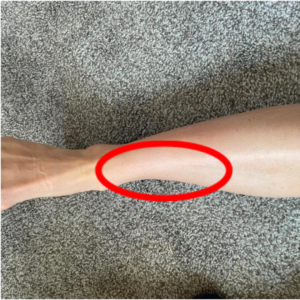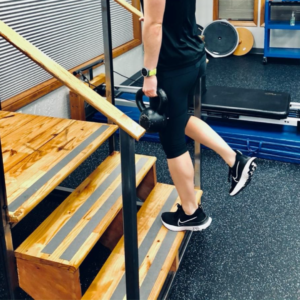Shin splints, more formerly known as “medial tibial stress syndrome”, is a common overuse injury seen in runners. It is characterized by pain along the inside of the shin (tibia), typically in the area closer to your ankle, that can be present in one or both legs. Here are some ways you can directly address risk factors associated with shin splints.
Improve your calf muscle endurance (specifically plantarflexors)
Studies have shown that poor plantarflexor is associated with increased risk of developing shin splints.1 The plantarflexors are the muscles that you use doing a heel raise. Try doing heel raises to strengthen your plantarflexors and help keep shin splints at bay. Goal number: 25 single leg heel raises (1).
Rest days
Shin splints are considered an over-use injury (2). When you are training, make sure you are utilizing rest days and/or low-impact cross training (swimming, biking) activities. When our training exceeds what our muscles and bones can tolerate, we develop overuse injuries. The best way to combat these injuries is by giving our body the rest it needs. If you are finding that you are not sleeping as much, have increased your activity levels dramatically and/or are feeling more fatigued during your runs than what is normal, don’t be afraid to take a rest day. One day of rest will sometimes far exceed the benefits of going for a run when fatigued!
Orthotics
If you have shin splints, one thing you can try is using an orthotic. While they don’t work for everyone, orthotics may help reduce your pain if you have developed shin splints (3). The best way to see if orthotics work for you is to simply try on a pair, walk around and if they feel good, they may help you!
If you are battling shin pain, talk to your physical therapist to develop the strategy that will best suit you and your specific needs.
References:
1 Madeley LT, Munteanu SE, Bonanno DR. Endurance of the ankle joint plantar flexor muscles in athletes with medial tibial stress syndrome: A case-control study. Journal of Science and Medicine in Sport. 2007;10(6):356-362. doi:10.1016/j.jsams.2006.12.115
2 KORTEBEIN, PATRICK M.; KAUFMAN, KENTON R.; BASFORD, JEFFREY R.; STUART, MICHAEL J. Medial tibial stress syndrome, Medicine & Science in Sports & Exercise: March 2000 – Volume 32 – Issue – p S27-S33
3 Moen, M.H., Tol, J.L., Weir, A. et al. Medial Tibial Stress Syndrome. Sports Med 39, 523–546 (2009). https://doi.org/10.2165/00007256-200939070-00002







